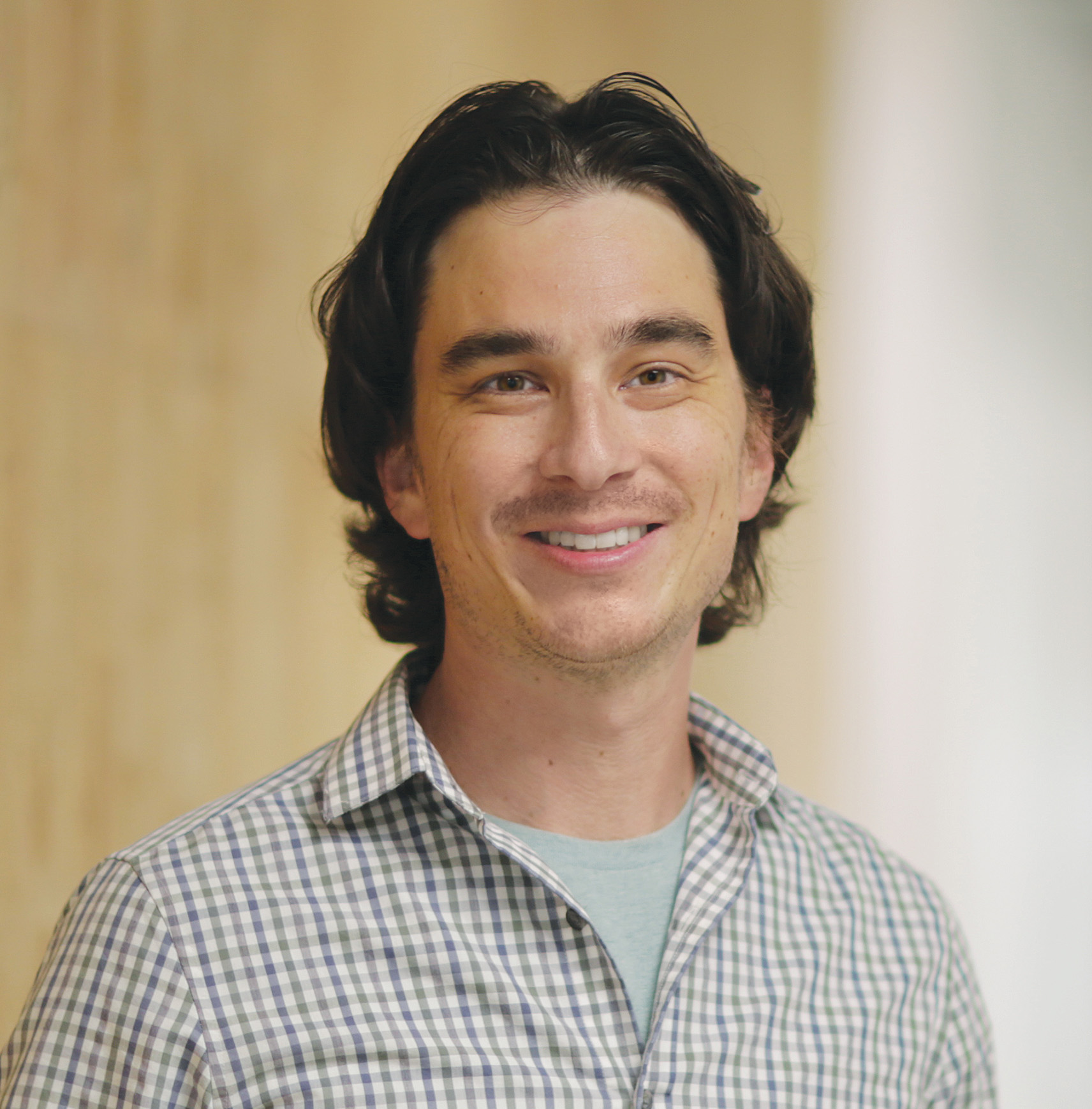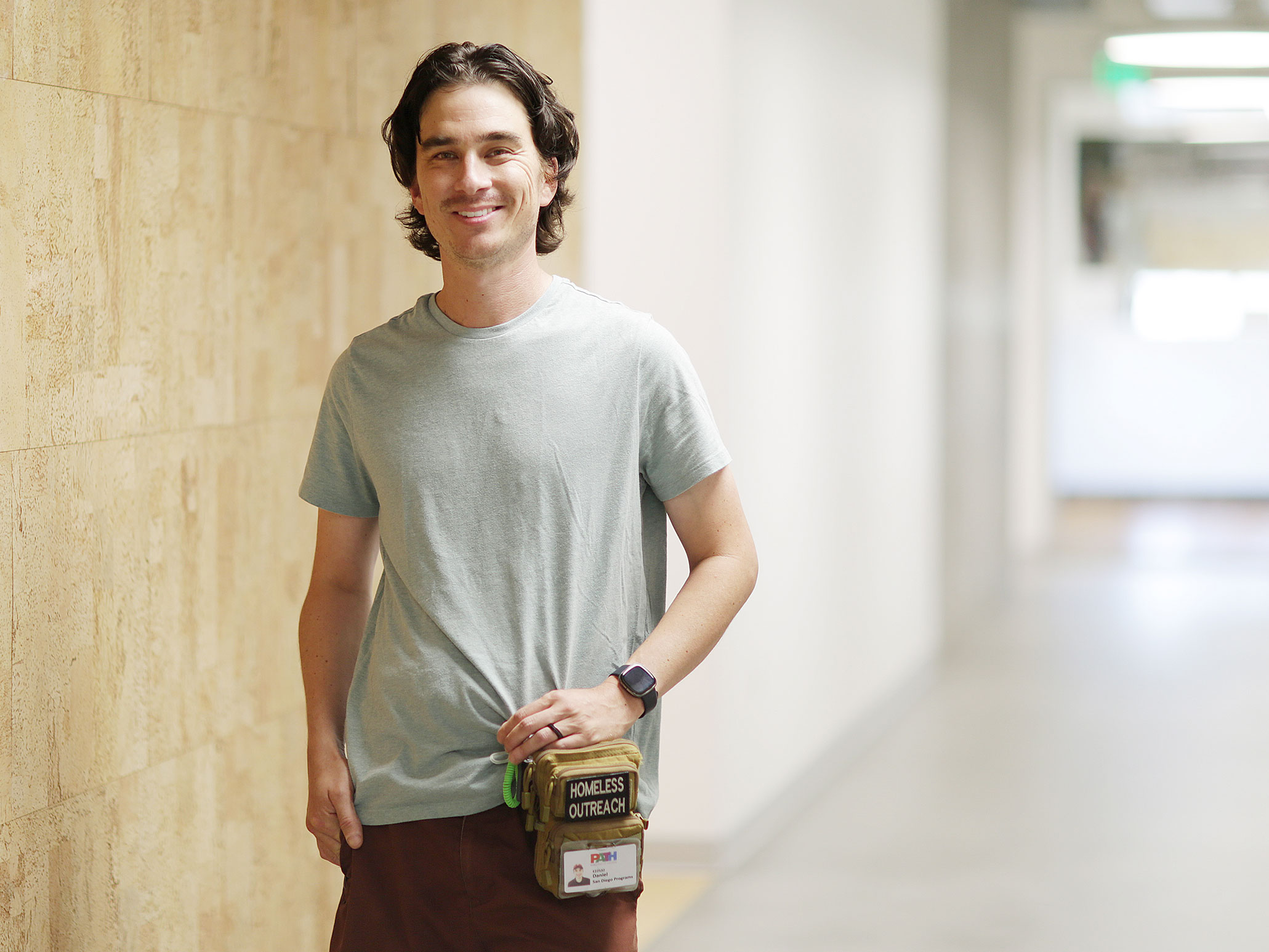 myCSUSM
myCSUSMAn Entrepreneurial Mindset
7-minute read | Essential Management Skills for Nonprofits

DANIEL STURMAN | Program Manager, People Assisting the Homeless (PATH)
Daniel Sturman started his career in homeless services as an overnight security guard at a homeless shelter. Fast forward six years and he is a program manager for People Assisting the Homeless (PATH), where he is bringing strategies he began developing in CSUSM’s Essential Management Skills for Nonprofits program. In fact, his capstone project was the catalyst for a PATH outreach event in Ramona, California, that garnered a strong response and has fueled his efforts to think like a homeless services entrepreneur.
What brought you into homeless services?
2016 was a difficult year for me. I was struggling in many ways, including losing my employment. I found a job at a local homeless shelter, Operation Hope. They were looking for an overnight security guard, and that’s how I started working in homeless services. I went from overnight security to lead resident attendant. From there, I went to Interfaith Community Services’ Haven House Emergency Shelter, where I got to do intake and learn about connecting people with social services and other resources. I transitioned to being a case manager for the shelter, doing housing stability case management, along with a wide variety of other services.
That was during COVID. I was definitely blessed to be employed through COVID, but it was a very traumatic time, especially in homeless services. Every day was stressful. I reached a tipping point, and I decided I should find something else, so I worked as an administrative assistant in the bereavement department of a hospice company. All the skills that I’d learned supporting severely traumatized people transitioned really well to bereavement services and hospice.
Then a homeless services collaborator gave me a call and she said, “Hey, I’m doing this homeless outreach gig. Do you want to do it?” And I jumped right back in. The position was homeless outreach in North County (San Diego) with PATH (People Assisting the Homeless). Now, I’m working as program manager.
You’ve provided homeless services from many positions during extremely challenging times. What keeps you inspired?
I have behavioral health lived experience. I’ve had struggles that a lot of people that experience homelessness have. I know the feeling that a lot of our clients have of not having anybody (to turn to) and not feeling like they connect with anybody. What I’ve noticed working in homeless services is people tend to connect more with others who have a lived understanding of the things they are struggling with, and that uncerstanding can help make a connection that could help someone make better choices for their future.
It’s taught me a lot about patience, and I’m glad I’ve learned that. The homeless services industry has welcomed me with the little education that I have, they’ve been very welcoming of my opinions, and I really enjoy working in the field.
How did you find out about CSUSM’s Essential Management Skills for Nonprofits program? What about the program appealed to you?
I’m a member of the (program partner) Alliance for Regional Solutions through work. The Alliance sent out a flyer about the program and I had taken my position as program manager a few months prior. My boss said they wanted to see more education for me because I didn’t have education relatable to the field. In my mind, it was a perfect fit. The program was what my boss was asking for, in terms of somebody without a college background wanting to gain experience in this particular subject. This field is four- and six-year degree dominant, so in terms of leadership, I needed to step up my game. This offered exactly what I needed to get a fast-track understanding of management in nonprofits.
Were you able to use what you learned in the class right away?
In the class, (instructor) Dom Betro tries to give you conceptual ideas that are going to help you think in new ways. One of the things he always talked about was being an entrepreneur. He gave us a history of social services over the years and all the different ways people have raised money. He said the best way to do it is to think about it as an entrepreneur. He definitely helped me to look outside of traditional funding channels for homeless events. He showed us that if something doesn’t exist, you make it exist, and that’s how you create things. He was very inspiring.
I used my capstone project as a catalyst to make an event happen. In the program, we had a group project and we decided our topic would be a Ramona homeless outreach project. A month after the class ended, we had the event.
How did the project turn out?
I was told not to expect many people for a first event. You might, if you’re lucky, get eight or 12 people. We had 24 people signed in to receive services. I was able to connect with TrueCare as a pivotal provider because they could send an RV out that has a dental provider or medical provider on board. We had the County of San Diego’s Live Well on Wheels bus there. They had county social workers and benefits specialists so they could handle any county benefit right then and there. They could print out EBT cards. We had a harm reduction team with supplies from Neighborhood Healthcare, from fentanyl and xylazine test strips to Narcan and needle disposal kits to put used needles in. We had one of Ramona’s faith-based recovery programs show up. We had the YMCA TAY (transition-age youth) Homeless Outreach program there and the San Diego Sheriff’s Homeless Assistance Resource Team (HART).
For our second Ramona homeless outreach event, we had a few more providers, including a homeless court advocate and a hairstylist. It was a very good learning experience. I do intend to continue these events, maybe quarterly, but that’s yet to be determined.

Daniel Sturman carries a homeless outreach kit when he is working in the community.
What else are you doing for PATH in your new position as program manager?
PATH is a very strong advocate of evidence-based practices and one of those is dealing with something called anosognosia, which is not knowing that you have a physical or psychiatric condition. Those effects are seen most often in schizophrenia, schizoaffective and bipolar conditions, where we see denial when it’s actually someone’s inability to recognize that they’re even sick.
Dr. Xavier Amador created a program called LEAP, which is a toolkit used for people with anosognosia, and I just took a train the trainer course. I’ll be working with other people who went through the train the trainer course to teach other PATH team members about this LEAP (Listen-Empathize-Agree-Partner) toolkit.
Looking at your future, do you have a vision for what you want to accomplish?
I’ve found a really interesting niche in the homeless services field that I frankly love. I enjoy shelters more than outreach, but a lot of the principles are very similar in how we would approach individuals in each setting. I would like to continue in this field and help develop it. San Diego does struggle with quite a bit of unsheltered homelessness and sheltered homelessness. I definitely think that we need people like myself who can envision and create programs and services that are needed.
Please visit the CSUSM Extended Learning website for more information about the Essential Management Skills for Nonprofits program.






